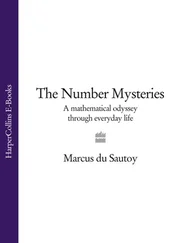Humboldt’s drive from teaching science as a practical tool to the more aesthetic notion of knowledge for its own sake had filtered down to Schmalfuss’s classroom. The teacher steered Riemann’s reading away from mathematical texts full of formulas and rules that were aimed at feeding the demands of a growing industrial world, and guided him towards the classics of Euclid, Archimedes and Apollonius. With their geometry, the ancient Greeks sought to understand the abstract structure of points and lines, and they were not hung up on the particular formulas behind the geometry. When Schmalfuss did give Riemann a more modern text, Descartes’s treatise on analytical geometry – a subject rife with equations and formulas – the teacher could see that the mechanical method developed in the book did not appeal to Riemann’s growing taste for conceptual mathematics. As Schmalfuss later recalled in a letter to a friend, ‘already at that time he was a mathematician next to whose wealth a teacher felt poor’.
One of the books that was sitting on Schmalfuss’s shelf was a contemporary volume the teacher had acquired from France. Published in 1808, Théorie des Nombres by Adrien-Marie Legendre was the first text to record the observation that there seemed to be a strange connection between the function that counted the number of prime numbers and the logarithm function. This connection, discovered by Gauss and Legendre, was only based on experimental evidence. It was far from clear whether, as one counted higher, the number of primes would always be approximated by Gauss’s or Legendre’s function.
Despite the volume’s 859 large quarto pages, Riemann gobbled it up, returning the book to his teacher just six days later with the precocious declaration, ‘This is a wonderful book; I know it by heart.’ His teacher could not believe it, but when he examined Riemann on its contents during his final examinations two years later, the student answered perfectly. That marked the beginning of the career of one of the giants of modern mathematics. Thanks to Legendre, a seed was sown in the young Riemann’s mind that in later life was to blossom in spectacular fashion.
His final examinations over, Riemann was eager to join one of the vigorous new universities that were driving the educational revolution in Germany. His father, though, had other ideas. Riemann’s family was poor, and his father hoped that Bernhard would join him in the Church. The life of a clergyman would provide him with a regular income with which he could support his sisters. The only university in the Kingdom of Hanover to offer theology was not one of these new establishments but the University of Göttingen, founded over a century before, in 1734. So in 1846, to comply with his father’s wishes, Riemann made his way to the dank town of Göttingen.
Göttingen sits quietly in the gentle hills of Lower Saxony. At its heart lies a small medieval town enclosed by ancient ramparts. This is the Göttingen that Riemann would have known, and it still retains much of its original character. The streets wind narrowly between half-timbered houses topped with red-tiled roofs. The Brothers Grimm wrote many of their fairy tales in Göttingen, and one can imagine Hansel and Gretel running through its streets. In the centre stands the medieval town hall, whose walls display the motto ‘Away from Göttingen there is no life.’ For those at the university that was certainly the feeling. The academic life was one of self-sufficiency. Although theology had predominated in the early years of the university, the winds of academic change sweeping across Germany had stimulated Göttingen’s scientific curriculum. By the time Gauss was appointed as professor of astronomy and director of the observatory in 1807, it was science rather than theology for which Göttingen was becoming famous.
The fire for mathematics that the teacher Schmalfuss had ignited in the young Riemann was still burning strong. His father’s wish that he study theology had brought him to Göttingen, but it was the influence of the great Gauss and Göttingen’s scientific tradition that left its mark during that first year. It was only a matter of time before Greek and Latin lectures gave way to the temptation of courses in physics and mathematics. With trepidation, Riemann wrote to his father suggesting that he would like to switch from theology to mathematics. His father’s approval meant everything to Riemann. With a sense of relief he received his father’s blessing, and immediately immersed himself in the scientific life of the university.
To a young man of such talent, Göttingen soon began to feel small. Within a year Riemann had exhausted the resources available to him. Gauss, by now an old man, had become quite withdrawn from the intellectual life of the university – since 1828 he had spent only one night away from the observatory, where he lived. At the university he only lectured on astronomy, and in particular on the method that had made him famous when he’d rediscovered the ‘lost’ planet Ceres many years before. Riemann had to look elsewhere for the stimulus he needed to take the next step in his development. He could see Berlin was where the buzz of intellectual activity was the loudest.
The University of Berlin had been greatly influenced by the successful French research institutes, such as the École Polytechnique, that had been founded by Napoleon. It had, after all, been founded during the French occupation. One of the key mathematical ambassadors was a brilliant mathematician by the name of Peter Gustav Lejeune-Dirichlet. Although he was born in Germany in 1805, Dirichlet’s family was of French origin. A return to his roots took him to Paris in 1822, where he spent five years soaking up the intellectual activity that was bubbling out of the academies. Wilhelm von Humboldt’s brother Alexander, an amateur scientist, met Dirichlet on his travels and was so impressed that he secured him a position back in Germany. Dirichlet was something of a rebel. Perhaps the atmosphere on the streets in Paris had given him a taste for challenging authority. In Berlin, he was quite happy to ignore some of the antiquated traditions demanded by the rather stuffy university authorities, and often flouted their demands to demonstrate his command of the Latin language.
Göttingen and Berlin offered emerging scientists such as Riemann contrasting academic climates. Göttingen revelled in its independence and isolation. Few seminars were presented by anyone from beyond the city walls. It was self-sufficient and generated great science from the fuel burning within. Berlin, on the other hand, thrived on the stimulation coming from outside Germany. The ideas feeding through from France mixed with the forward-looking German approach to natural philosophy to create a heady new cocktail.
The different climates of Göttingen and Berlin suited different mathematicians. Some would never have succeeded without contact with new ideas from external sources. The success of other mathematicians can be traced back to an isolation which forced them to find an inner strength and new languages and modes of thought. Riemann would turn out to be someone whose breakthroughs came from contact with the wealth of new ideas that were in the air, and he could see that Berlin was the place to be.
Riemann made his move in 1847 and remained in Berlin for two years. While there, he was able to get his hands on papers by Gauss which he had not been able to prise from the reticent master in Göttingen. He attended lectures by Dirichlet, who was later to play a part in Riemann’s dramatic discoveries about prime numbers. By all accounts, Dirichlet was an inspiring lecturer. One mathematician who attended his lectures put it thus:
Dirichlet cannot be surpassed for richness of material and clear insight … he sits at the high desk facing us, puts his spectacles up on his forehead, leans his head on both hands, and … inside his hands he sees an imaginary calculation and reads it out to us – that we understand it as well as if we too saw it. I like that kind of lecturing.
Читать дальше












